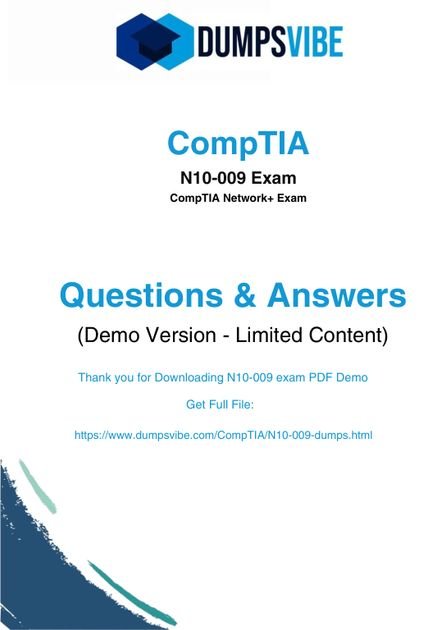Suggest an improvement
var gform;gform||(document.addEventListener(“gform_main_scripts_loaded”,function()gform.scriptsLoaded=!0),document.addEventListener(“gform/theme/scripts_loaded”,function()gform.themeScriptsLoaded=!0),window.addEventListener(“DOMContentLoaded”,function()gform.domLoaded=!0),gform=domLoaded:!1,scriptsLoaded:!1,themeScriptsLoaded:!1,isFormEditor:()=>”function”==typeof InitializeEditor,callIfLoaded:function(o)!gform.themeScriptsLoaded&&!gform.isFormEditor(),initializeOnLoaded:function(o)gform.callIfLoaded(o),hooks:action:,filter:,addAction:function(o,r,e,t)gform.addHook(“action”,o,r,e,t),addFilter:function(o,r,e,t)gform.addHook(“filter”,o,r,e,t),doAction:function(o)gform.doHook(“action”,o,arguments),applyFilters:function(o)return gform.doHook(“filter”,o,arguments),removeAction:function(o,r)gform.removeHook(“action”,o,r),removeFilter:function(o,r,e)gform.removeHook(“filter”,o,r,e),addHook:function(o,r,e,t,n)null==gform.hooks[o][r]&&(gform.hooks[o][r]=[]);var d=gform.hooks[o][r];null==n&&(n=r+”_”+d.length),gform.hooks[o][r].push(tag:n,callable:e,priority:t=null==t?10:t),doHook:function(r,o,e)var t;if(e=Array.prototype.slice.call(e,1),null!=gform.hooks[r][o]&&((o=gform.hooks[r][o]).sort(function(o,r)return o.priority-r.priority),o.forEach(function(o)”function”!=typeof(t=o.callable)&&(t=window[t]),”action”==r?t.apply(null,e):e[0]=t.apply(null,e))),”filter”==r)return e[0],removeHook:function(o,r,t,n)var e;null!=gform.hooks[o][r]&&(e=(e=gform.hooks[o][r]).filter(function(o,r,e)null!=t&&t!=o.priority)),gform.hooks[o][r]=e));

-
N/AFix spelling/grammar issueAdd or fix a linkAdd or fix an imageAdd more detailImprove the quality of the writingFix a factual error
-
You don’t need to tell us which article this feedback relates to, as we automatically capture that information for you.
-
This allows us to get in touch for more details if required.
-
Enter a five letter word in lowercase
#gform_wrapper_38 .gform_footer visibility: hidden; position: absolute; left: -100vw;
-
This field is for validation purposes and should be left unchanged.
/* = 0;if(!is_postback)return;var form_content = jQuery(this).contents().find(‘#gform_wrapper_38’);var is_confirmation = jQuery(this).contents().find(‘#gform_confirmation_wrapper_38’).length > 0;var is_redirect = contents.indexOf(‘gformRedirect(){‘) >= 0;var is_form = form_content.length > 0 && ! is_redirect && ! is_confirmation;var mt = parseInt(jQuery(‘html’).css(‘margin-top’), 10) + parseInt(jQuery(‘body’).css(‘margin-top’), 10) + 100;if(is_form)jQuery(‘#gform_wrapper_38’).html(form_content.html());if(form_content.hasClass(‘gform_validation_error’))jQuery(‘#gform_wrapper_38’).addClass(‘gform_validation_error’); else jQuery(‘#gform_wrapper_38’).removeClass(‘gform_validation_error’);setTimeout( function() /* delay the scroll by 50 milliseconds to fix a bug in chrome */ jQuery(document).scrollTop(jQuery(‘#gform_wrapper_38’).offset().top – mt); , 50 );if(window[‘gformInitDatepicker’]) gformInitDatepicker();if(window[‘gformInitPriceFields’]) gformInitPriceFields();var current_page = jQuery(‘#gform_source_page_number_38’).val();gformInitSpinner( 38, ‘https://geekymedics.com/wp-content/plugins/gravityforms/images/spinner.svg’, true );jQuery(document).trigger(‘gform_page_loaded’, [38, current_page]);window[‘gf_submitting_38’] = false;else if(!is_redirect)var confirmation_content = jQuery(this).contents().find(‘.GF_AJAX_POSTBACK’).html();if(!confirmation_content)confirmation_content = contents;jQuery(‘#gform_wrapper_38’).replaceWith(confirmation_content);jQuery(document).scrollTop(jQuery(‘#gf_38’).offset().top – mt);jQuery(document).trigger(‘gform_confirmation_loaded’, [38]);window[‘gf_submitting_38’] = false;wp.a11y.speak(jQuery(‘#gform_confirmation_message_38’).text());elsejQuery(‘#gform_38’).append(contents);if(window[‘gformRedirect’]) gformRedirect();jQuery(document).trigger(“gform_pre_post_render”, [ formId: “38”, currentPage: “current_page”, abort: function() this.preventDefault(); ]); if (event && event.defaultPrevented) return; const gformWrapperDiv = document.getElementById( “gform_wrapper_38” ); if ( gformWrapperDiv ) const visibilitySpan = document.createElement( “span” ); visibilitySpan.id = “gform_visibility_test_38”; gformWrapperDiv.insertAdjacentElement( “afterend”, visibilitySpan ); const visibilityTestDiv = document.getElementById( “gform_visibility_test_38” ); let postRenderFired = false; function triggerPostRender() if ( postRenderFired ) return; postRenderFired = true; gform.core.triggerPostRenderEvents( 38, current_page ); if ( visibilityTestDiv ) visibilityTestDiv.parentNode.removeChild( visibilityTestDiv ); function debounce( func, wait, immediate ) var timeout; return function() var context = this, args = arguments; var later = function() timeout = null; if ( !immediate ) func.apply( context, args ); ; var callNow = immediate && !timeout; clearTimeout( timeout ); timeout = setTimeout( later, wait ); if ( callNow ) func.apply( context, args ); ; const debouncedTriggerPostRender = debounce( function() triggerPostRender(); , 200 ); if ( visibilityTestDiv && visibilityTestDiv.offsetParent === null ) const observer = new MutationObserver( ( mutations ) => mutations.forEach( ( mutation ) => if ( mutation.type === ‘attributes’ && visibilityTestDiv.offsetParent !== null ) debouncedTriggerPostRender(); observer.disconnect(); ); ); observer.observe( document.body, attributes: true, childList: false, subtree: true, attributeFilter: [ ‘style’, ‘class’ ], ); else triggerPostRender(); } );} );
/* ]]> */

Key points
- ARDS: acute inflammation and fluid accumulation in alveoli → respiratory failure; affects 10–15% of ICU pts; mortality 30–50%.
- Causes: most commonly sepsis (esp. pneumonia); others include aspiration, toxic inhalation, pancreatitis, transfusion, trauma, COVID-19.
- Pathophysiology: diffuse alveolar damage → ↑ capillary permeability → pulmonary oedema → hypoxaemia; may progress to fibrosis.
- Risk factors: critical illness, smoking, chronic alcohol use, long-term pollutant exposure.
- Clinical features: acute dyspnoea, tachypnoea, pleuritic chest pain, frothy sputum, confusion (due to hypoxia).
- Investigations: CXR (bilateral infiltrates), ABG (↓PaO₂), FBC, cultures, viral testing, NT-proBNP (to exclude heart failure), CT/echo.
- Diagnostic criteria: acute onset, bilateral opacities, PaO₂/FiO₂ ≤ 300 mmHg, not explained by heart failure/fluid overload.
- Management: oxygen (SpO₂ ≥ 92%), mechanical ventilation, prone positioning ≥12h/day, conservative fluid strategy, treat infection.
- Ongoing care: thromboprophylaxis, glycaemic control, GI bleed prophylaxis, MAP > 60 mmHg, consider ECMO for refractory cases.
- Complications: ventilator-associated pneumonia, pneumothorax, fibrosis, multiorgan failure, mortality up to 50%.
Introduction
Acute respiratory distress syndrome (ARDS) is a severe, life-threatening condition characterised by acute inflammation and fluid accumulation in the lungs, leading to respiratory failure. It is often triggered by infection, trauma, or other critical illness.
About 10% to 15% of patients in the intensive care unit develop ARDS, with those receiving mechanical ventilation at higher risk.1-3 Mortality ranges between 30% and 50%, but survival is improving.2, 4-5
Aetiology
The underlying aetiology of ARDS involves some form of direct or indirect insult to the lungs, which triggers an inflammatory response. Common causes include:6
- Sepsis (especially of pulmonary origin like pneumonia), which is the most common cause
- Aspiration of gastric contents
- Toxic inhalation (e.g. smoke, chemical fumes, e-cigarettes or vaping product-associated lung injury)
- Pancreatitis (due to the release of inflammatory mediators)
- Transfusion-related lung injury
- Burns and severe trauma (due to indirect injury from early haemorrhagic shock)
- Pulmonary contusion
- COVID-19
Pathophysiology
The pathophysiology of ARDS involves a sequence of events that begins with some form of lung insult (trigger), which leads to widespread inflammation that disrupts normal gas exchange.6-7
1. Trigger in a susceptible individual: ARDS begins with a triggering event (e.g. pneumonia) in an individual with a predisposing risk factor (e.g. chronic smoking)
2. Diffuse alveolar damage: the trigger activates immune cells, leading to the release of pro-inflammatory cytokines, which cause diffuse alveolar damage (the primary pathological finding of ARDS)
3. Membrane damage and increased permeability: inflammation increases alveolar-capillary permeability, causing fluid, protein, and cell leakage into alveoli, leading to pulmonary oedema and damage
4. Impaired oxygenation: fluid accumulation in the alveoli and the damage to lung structures results in impaired gas exchange, leading to hypoxaemia and respiratory failure
5. Resolution or progression: after the acute onset of inflammation in ARDS, some patients recover with normal lung function while others progress to fibroproliferation in the lungs, causing severe fibrosis
Risk factors
ARDS doesn’t occur in every individual exposed to a trigger, but often only in those with underlying risk factors.
Risk factors for ARDS include:8
- Critical illness
- Cigarette smoking
- Chronic alcohol use
- Long-term exposure to air pollutants
Clinical features
ARDS presents with rapidly worsening respiratory failure and hypoxia within 6–72 hours of a triggering event. Patients often present with a history of acute dyspnoea, which worsens over hours to days.
History
Typical symptoms of ARDS include:8
- Shortness of breath (progressive)
- Rapid breathing
- Fever, cough or pleuritic chest pain: especially if the underlying cause is pneumonia
- Productive cough with frothy sputum (less common)
- Confusion or agitation caused by hypoxia
Clinical examination
A thorough respiratory examination is required for all those with suspected ARDS.
Typical clinical findings of ARDS include:8
- Use of accessory muscles for respiration
- Diffuse pulmonary crepitations on auscultation
- Hypoxaemia despite supplemental oxygen
- Increased respiratory rate (> 20 per minute)
- Tachycardia and hypotension in severe cases
Differential diagnoses
Differential diagnoses to suspect in ARDS include:8
- COVID-19: both a cause (in severe cases) and a differential for ARDS; confirmed by polymerase chain reaction testing
- Acute heart failure: enlarged cardiac silhouette on CXR, raised NT-proBNP and positive findings on echocardiogram
- Bilateral pneumonia: lack of severe hypoxaemia differentiates it from ARDS
- Diffuse alveolar haemorrhage: increasingly bloody fluid samples during repeated bronchoalveolar lavage
- Acute eosinophilic pneumonia: high eosinophil count (raised by 50%) on bronchoalveolar lavage
- Hypersensitivity pneumonitis: pneumonitis due to organic antigen inhalation
Investigations
Bedside investigations
Typical bedside investigations include:8
- Bedside observations: to assess the severity of hypoxaemia; low oxygen saturation despite supplemental oxygen is characteristic of ARDS
- Arterial blood gas: to assess the degree of hypoxia and hypercapnia
Laboratory investigations
Typical laboratory investigations include:8
- Full blood count (FBC): may show evidence of infection (e.g. leukocytosis in pneumonia)
- Cultures (sputum, blood and urine): for possible underlying infection
- Serum amylase/lipase: raised levels suggest acute pancreatitis
- NT-proBNP: suggests heart failure if > 500 nanograms/L
- Viral testing: reverse transcriptase-polymerase chain reaction or other molecular tests should be considered for viruses (e.g. influenza, SARS-CoV-2)
Imaging
Typical imaging includes:8
- Chest X-ray: may show bilateral infiltrates ( a hallmark of ARDS) and exclude other causes such as pneumonia, cardiogenic pulmonary oedema, or atelectasis
- Echocardiogram: to assess left ventricular function and pulmonary artery pressures
- CT thorax: if further pulmonary imaging is required


Specialist investigations to consider include bronchoalveolar lavage, endotracheal aspirate and pulmonary artery catheterisation.
Diagnosis
A diagnosis of ARDS is made if all of the following are met:9
- Acute onset (within one week of known clinical insult)
- Bilateral opacities on chest radiograph or computed tomography (CT), or bilateral B lines and/or consolidations on ultrasound not fully explained by effusions, atelectasis, or nodules/masses
- PaO₂/FiO₂ ratio of ≤ 300 mmHg (≤ 40 kPa) or SpO₂/FiO₂ ratio of ≤ 315 mmHg (≤ 42 kPa)
- Respiratory failure that is not fully explained by heart failure or fluid overload
Severity of ARDS
Based on PaO₂:FiO₂, ARDS can be categorised as:
- Mild: 201 – 300 mmHg (26.8 – 40 kPa)
- Moderate: 101 – 200 mmHg (13.4 – 26.7 kPa)
- Severe: ≤ 100 mmHg (≤ 13.3 kPa)
Management
ARDS management is complex and requires the guidance of an experienced senior within a critical care setting.
Initial management
- Oxygen and ventilation: SpO2 target should be ≥ 92%, achieved with high-flow nasal oxygen (HFNO) or non-invasive ventilation. Many require endotracheal intubation and mechanical ventilation10-11
- Prone positioning: reduces mortality in severe ARDS, but only if maintained for at least 12 hours daily12
- Intravenous fluids: fluid balance should be maintained as slightly negative or neutral (unless clinically shocked)10
- Treatment of infection: when an infectious cause is suspected, empirical antibiotics or antivirals should be started as soon as possible after obtaining appropriate cultures. Once culture results are available, the antimicrobial regimen can be changed accordingly13
Ongoing management
- Supportive care for critically ill patients: including deep vein thrombosis prevention, blood glucose control, prophylaxis for stress-induced gastrointestinal bleeding, haemodynamic support to maintain a mean arterial pressure > 60 mmHg, and transfusion of packed red blood cells if haemoglobin < 70 g/L14
- Rescue therapies like extracorporeal membrane oxygenation (ECMO), neuromuscular paralysis, inhaled nitric oxide, and prostacyclin should be considered for refractory hypoxaemia10
Complications
Complications of ARDS include:8
- Persistent dyspnoea: particularly on exertion
- Ventilator-associated pneumonia: common in those mechanically ventilated > 48 hours
- Abnormal lung function: with an obstructive or restrictive picture
- Reduced quality of life
- Pneumothorax: due to pulmonary barotrauma
- Multiple organ failure: including respiratory failure, renal failure, shock, acute delirium, or coma
- Death: with mortality between 30% and 50%
Usually, no long-term monitoring is needed in patients who survive ARDS.8 Patients who continue to have shortness of breath may need yearly pulmonary function tests and repeat imaging to ensure recovery.
Reviewer
Dr Muhammad Ilyas
Acute Medicine Consultant
Editor
Dr Jamie Scriven
References
- Frutos-Vivar F, Esteban A. Epidemiology of acute lung injury and acute respiratory distress syndrome. Current Opinion in Critical Care. Available from: [LINK].
- Summers C, Singh NR, Worpole L, et al. Incidence and recognition of acute respiratory distress syndrome in a UK intensive care unit. Thorax. 2016. Available from: [LINK].
- Bellani G, Laffey JG, Pham T, et al. Epidemiology, patterns of care, and mortality for patients with acute respiratory distress syndrome in intensive care units in 50 countries. JAMA. 2016. Available from: [LINK].
- Rubenfeld GD, Caldwell E, Peabody E, et al. Incidence and outcomes of acute lung injury. New England Journal of Medicine. 2005. Available from: [LINK].
- Cochi SE, Kempker JA, Annangi S, et al. Mortality trends of acute respiratory distress syndrome in the United States from 1999 to 2013. Annals of the American Thoracic Society. 2016. Available from: [LINK].
- Bos LDJ, Ware LB. Acute respiratory distress syndrome: causes, pathophysiology, and phenotypes. Lancet. 2022. Available from: [LINK].
- Matthay MA, Ware LB, Zimmerman GA. The acute respiratory distress syndrome. The Journal of Clinical Investigation. 2012. Available from: [LINK].
- BMJ Best Practice. Acute respiratory distress syndrome (ARDS). 2024. Available from: [LINK].
- Matthay MA, Arabi Y, Arroliga AC, et al. A new global definition of acute respiratory distress syndrome. American Journal of Respiratory and Critical Care Medicine. 2024. Available from: [LINK].
- Meyer NJ, Gattinoni L, Calfee CS. Acute respiratory distress syndrome. Lancet. 2021. Available from: [LINK].
- Agarwal R, Aggarwal AN, Gupta D. Role of noninvasive ventilation in acute lung injury/acute respiratory distress syndrome: a proportion meta-analysis. Respiratory Care. 2010. Available from: [LINK].
- Munshi L, Del Sorbo L, Adhikari NKJ, et al. Prone position for acute respiratory distress syndrome. A systematic review and meta-analysis. Annals of the American Thoracic Society. 2017. Available from: [LINK].
- Metlay JP, Waterer GW, Long AC, et al. Diagnosis and treatment of adults with community-acquired pneumonia. An official clinical practice guideline of the American Thoracic Society and Infectious Diseases Society of America. American Journal of Respiratory and Critical Care Medicine. 2019. Available from: [LINK].
- Samama MM, Cohen AT, Darmon JY, et al. Prophylaxis in Medical Patients with Enoxaparin Study Group. A comparison of enoxaparin with placebo for the prevention of venous thromboembolism in acutely ill medical patients. New England Journal of Medicine. 1999. Available from: [LINK].
Image references
- James Heilman, MD. Bilateral opacities on chest X-ray due to severe ARDS. License: [CC BY-SA 4.0]. Available from: [LINK].
Discover more from Bibliobazar Digi Books
Subscribe to get the latest posts sent to your email.




